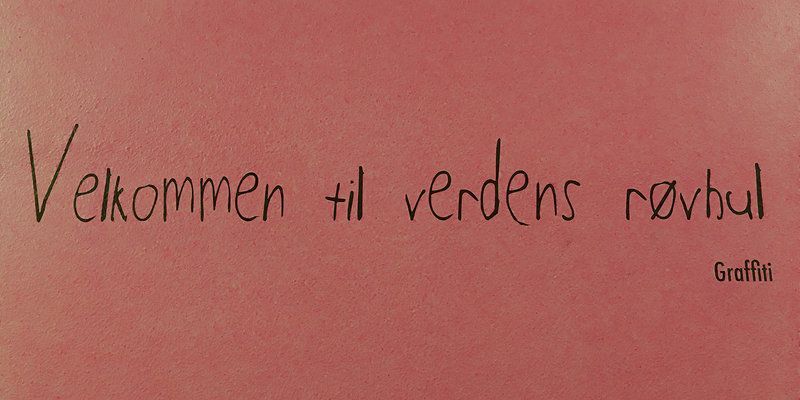It can be seen from the whole city - the former state prison in Horsens. Maybe the prison was built high up on the hill - as a fear and warning to everyone - if you do not obey the law, then you end up here!
In 1853, the prison in Horsens opened as the first prison in Denmark built on the basis of modern criminal law principles. It housed male prisoners convicted under a penal code that changed over time with society’s changing demands for punishment and improvement. For 153 years the building followed the development, but in 2006 it was finished and the gate closed after the last prisoner. Today, a visit to the Prison is an exciting - and awardwinning experience - with light and sound scenery that brings you as a visitor - into the everyday life and the framework that the prisoners had as prisoners.
The 153 years the prison was in use, an unmanageably long line of prisoners served their sentences here. The common denominator for the majority of the prisoners is that they and their stories are completely anonymous. But a small group of prisoners are known, famous or even infamous. These are prisoners whose upbringing, living conditions and motives are as different as their crimes and the number of years they spent in prison. What unites them is that they and their stay in prison are already known far beyond the walls.
One of these prisoners is Jens Nielsen, who came to prison in 1884 with a sentence of 16 years. He was 21 years old and had already been in prison for many years. With the prospect of another 16 years behind bars and in solitude, he decided to die. The method was to try to kill an officer so he could get a death sentence and be executed. It took three more attempts before he received his death sentence. Jens Nielsen was executed on November 8, 1892. He turned 29 years old.
In the first 77 years of the prison’s history, there was the death penalty in Denmark, and it left its mark. Two of the prison’s prisoners were executed in 1865 and 1892, respectively. The execution in 1892 took place in the prison’s inner western courtyard, where the prisoner Jens Nielsen was beheaded. The death penalty has always been debated, especially during the trial after World War II, when the death penalty was temporarily reintroduced.
On 29 August 1943, the Danish government resigned, and the German occupying forces introduced military
state of affairs in Denmark. On the same day, a German force of 33 men, led by Lieutenant Weinreich, arrived at the prison in Horsens. The prison management and Lieutenant Weinreich agreed that the Germans would take over the external guarding of the prison. The German capitulation was a reality on 5 May 1945. Denmark’s liberation was celebrated throughout the country. In prison, liberation was marked by allowing prisoners to buy a pack of tobacco.
The prison had room for 336 prisoners. During the occupation, crime and thus the number of convicts increased drastically, i.a. because the blackout provided good conditions for the criminals not to be discovered. The increase in crime meant that there was a lack of space and overcrowding in the prison. Many prisoners had to sleep in dormitories or share a cell with other prisoners. Annexes were also set up outside the prison itself.
On December 30, 1944, 15 resistance fighters were on a farm trip. At the fence on the east side of the prison, a truck stopped. Two men got out of the car, crawled through a hole in the fence and came up the ring wall with a ladder and machine guns. While holding the officers in check, the 15 prisoners came over the wall, through the fence and up into the truck, which drove them away. The prison conducted a search but never found them.
Werner Best served as leader of the German occupying forces in Denmark from November 1942 until the capitulation in May 1945. After the war, Best received a sentence of 12 years in prison, which he was to serve in Horsens. During his imprisonment, he worked on archival work. Among other things, he spent his free time. on reading, writing, playing chess and practicing gymnastics. Best was released at the Danish-German border on August 29, 1951.
But come to the Prison yourself - see, experience and read about the place’s exciting history.
The Prison Museum in Horsens
The former Horsens State Prison closed in 2006 after more than 150 years of prison operations and opened in 2012 as the experience company FÆNGSLET. In just a few years, we have succeeded in creating a nationally and internationally recognized framework for culture and events. Today, the prison houses both an award-winning prison museum, accommodation, major concerts, art and culture festivals, entrepreneurship, business conferences and a dining hall.
FÆNGSLET
Fussingsvej 8
8700 Horsens
Phone: +45 76 10 00 11

Gps: 55.87468508928942, 9.836298980956
Restaurant - Vrads Station
When the past came to visit - host article
Struer - Humlum BB - host article
West Coast Cottage Holiday Apartments - host article
The Prison Museum in Horsens
Femmøller Beach and Ebeltoft
Strandingsmuseum St. George in Thorsminde
A 5-star experience in West Jutland - host article
The Energimuseet at Tange Lake
Verdenskortet - the World Map
Djursland - Fyrpasserhuset BB - host article
Silkeborg - Sejs BB - host article
Ebeltoft - Femmøller Strand BB - host article
Ry - Climb mountains in Denmark
Horsens - Medieval Festival
Mols Hills - The gods must...
Gudenåen - Denmarks longest watercourse
Djursland - Djurs Sommerland
Silkeborg - Riverboat Jazz Festival
MidJutland - Hærvejen
MidJutland - Land in between
Hvide Sande - Art in Hvide Sande
Silkeborg - The Highland of lakes
Randers - Randers Rainforest